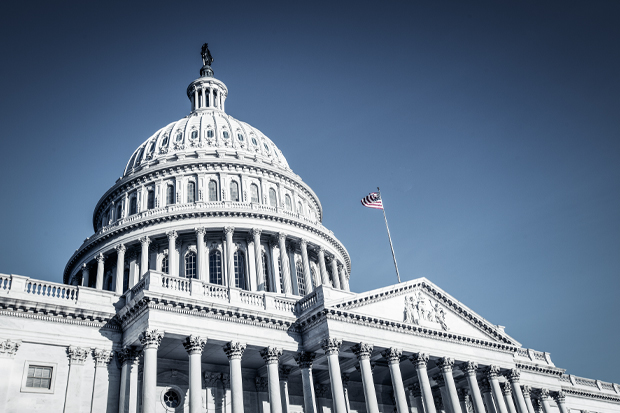
House Committee advances AVMA-backed xylazine language
The House Energy and Commerce Committee moved the SUPPORT Act out of committee on July 19. This legislative package was originally passed in 2018 to address the growing threat of the opioid crisis and the reauthorization contains key components from the Combating Illicit Xylazine Act—a bipartisan bill that the AVMA helped develop, introduce, and build bipartisan support for.
The xylazine language included in the SUPPORT Act would schedule xylazine as a Schedule III drug while exempting from scheduling the FDA-approved animal drug, which, if enacted, means veterinarians would be able to use it like they always have under federal law.
In the Senate, the Combating Illicit Xylazine Act has yet to be taken up by the Judiciary Committee; however, this proposed bill would make the manufacture, distribution, dispensing, or possession of xylazine with intent to traffic for human use subject to Schedule III penalties under the federal Controlled Stances Act. At the same time, the legitimate veterinary uses would remain under their current prescription status and would not be scheduled.
The AVMA endorses the xylazine language included in the House version of the SUPPORT Act reauthorization and is supportive of the Combating Illicit Xylazine Act as they both equip the Drug Enforcement Administration (DEA) with resources to address illicit xylazine while maintaining veterinary access to the prescription animal drug regulated by the Food and Drug Administration (FDA) without its being scheduled.
"The House Energy and Commerce Committee advancing key components of the Combating Illicit Xylazine Act represents months of collaborative work between the AVMA, congressional offices, federal agencies, and other stakeholders," said AVMA President Dr. Rena Carlson. "The AVMA appreciates the dedication lawmakers have demonstrated to address the public health crisis of illicit xylazine while at the same time understanding how essential the animal sedative is to veterinary medicine."
On April 12, Rahul Gupta, MD, director of the White House Office of National Drug Control Policy (ONDCP), designated fentanyl combined with xylazine as an "emerging threat" to the U.S. The designation mandated the federal government to put together a whole-of-government response plan with resources to counteract xylazine's growing presence as an additive in street drugs.
This is the first time this designation has been declared since legislation establishing the emerging threat designation was signed into law under the authority provided by The Substance Use-Disorder Prevention that Promotes Opioid Recovery and Treatment (SUPPORT) for Patients and Communities Act or the 'SUPPORT Act'. After the emerging threat designation was declared in April, ONDCP convened federal government departments and agencies to strategize and develop the national response plan. The office has also been meeting with state and local leaders and subject matter experts, including the AVMA, state attorneys general, and frontline health care and emergency services providers.
On July 11, the ONDCP released its response plan, "Fentanyl Adulterated or Associated with Xylazine Response Plan" (PDF) outlining where federal efforts will be directed to address the dangers of illicit xylazine. The overarching goal of the plan is a 15% reduction (compared to 2022 as the baseline year) of xylazine-positive drug poisoning deaths in at least three of four U.S. census regions by 2025.
"Veterinarians are part of the larger public health community dedicated to addressing the human health toll associated with illicit xylazine," Dr. Carlson said. "The AVMA is committed to working with the ONDCP, other federal agencies, and Congress on an ongoing basis to ensure they understand the essential need for xylazine across many areas of veterinary practice."
No new restrictions on xylazine were included in ONDCP's plan to combat the illegal supply of fentanyl combined with the veterinary drug. The response plan does say the government will "progress toward decisions on possible regulatory actions under the Controlled Substances Act, including scheduling of xylazine while simultaneously maintaining the legitimate supply of xylazine in veterinary medicine, and prioritizing facilitation of access to xylazine for research purposes."
"The government will also consider other potential avenues for prosecuting those who manufacture, import, export, sell, or distribute xylazine in order to support fentanyl trafficking."
The report also says public health and public safety officials need to know more about the sources of xylazine in the illicit drug supply chain and markets in the United States.
Federal officials did call for exploring scheduling or regulatory options. However, much of the White House's plan focuses on improving testing, data collection, prevention, supply reduction, and research efforts.
The monthly percentage of illegally manufactured fentanyl-involved deaths with xylazine detected is reported in the June 30 edition of Morbidity and Mortality Weekly Report from the Centers for Disease Control and Prevention.
The DEA reported that between 2020 and 2021, forensic laboratory identifications of xylazine rose in all four U.S. census regions, most notably in the South (193%) and the West (112%). The DEA also reports that xylazine-positive overdose deaths increased by 1,127% in the South and over 100% in all other regions.
By August 11, the ONDCP must issue implementation guidance to departments and agencies across the federal government, then the agencies must develop and submit an implementation report another 60 days later. Finally, the office must publish a national implementation report on the response plan by February 2024.
